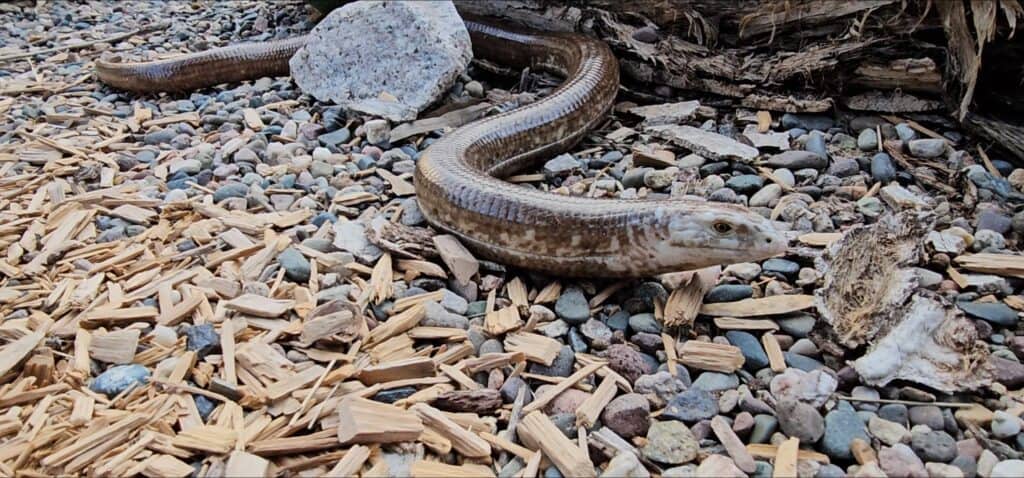European Legless Lizard
Pseudopus apodus
Snake Look-alike
Don’t be fooled by their lack of limbs! European legless lizards are indeed lizards and not snakes. There are some key features to note when identifying them. Unlike snakes, legless lizards have visible earholes and eyelids. Less visible features include cone-shaped teeth, as opposed to the more needle-like teeth of snakes, and fused mandibles (jaws) that prevents them from eating larger prey by stretching their jaws, as a snake would.
Break in Case of Emergency
Like many lizard species, European legless lizards can engage in caudal autotomy, which is a fancy way of saying they can drop their tails. Sometimes known as a “glass lizards,” it was once thought that they would shatter into pieces if touched. Once the tail is gone, the legless lizard will grow one back, albeit it won’t look the same.
Lost Limbs
There are multiple lizard groups known by the common name “legless lizard.” There are also other animal species whose limbs have been lost or reduced as they evolved. Several aquatic or subterranean amphibians, and certain fish (like eels) have diminished or entirely non-existent appendages. Birds like ostriches and Galapagos cormorants have little wings that are no longer used for flying. Even whales and dolphins have tiny internal femur bones, which many scientists think are the last remnants of hind legs.

Diet: invertebrates, small mammals
Zoo Diet: invertebrates, whole prey
Habitat: grasslands
Length: 2 – 3 feet

Plan your visit today!
The Phoenix Zoo is one of the largest non-profit zoos in the U.S., caring for over 3,000 animals, with nearly 400 species represented, including many threatened/endangered species.







